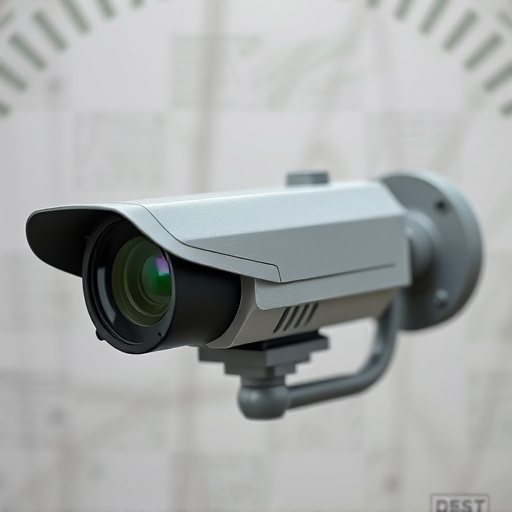Install dummy cameras strategically for enhanced security. Mount at eye level for realism. Choose indoor/outdoor models with realistic features. Select spots with line of sight and good lighting. Test connectivity and range for wireless setups. Maximize coverage while maintaining discretion.
“Enhance your home or business security with our comprehensive guide on installing dummy security cameras without wires. In this article, we demystify the art of strategic placement and optimal mounting height for these discreet devices. Learn from common mistakes and discover the secrets to achieving a secure environment with minimal visible intrusion. Whether you’re aiming for a subtle deterrent or a robust surveillance system, our step-by-step wireless installation guide ensures peace of mind.”
- Understanding Dummy Camera Placement Requirements
- Measuring Optimal Mounting Height for Discreet Vision
- Wireless Installation: Step-by-Step Guide to Success
- Common Mistakes to Avoid During Setup Process
Understanding Dummy Camera Placement Requirements
When planning to install dummy security cameras, understanding their placement requirements is paramount. Unlike real surveillance equipment, which often needs specific angles and lines of sight, dummy cameras are designed to deter crime through strategic deception. For instance, mounting them at heights that match or exceed those of real cameras can create the illusion of comprehensive coverage, deterring potential intruders.
Additionally, when considering where to place these camera fakes, remember that accessibility for installation is key. Install Dummy Cameras Without Wires setups require minimal physical connection points, allowing for versatile placement options, including hard-to-reach areas that real cameras might not cover. This flexibility enhances the visual impact and effectiveness of your security system without the hassle of extensive wiring.
Measuring Optimal Mounting Height for Discreet Vision
To achieve discreet vision with install dummy cameras without wires, understanding the optimal mounting height is key. The ideal height varies based on factors like the camera’s field of view and your specific surveillance needs. Generally, positioning your fake security cameras at eye level or slightly above creates a more realistic and effective setup. This height aligns with human perception, making it harder for intruders to detect the absence of an actual camera.
When measuring, consider the camera’s horizontal and vertical fields of view (FOV). Aim to mount the dummy camera so its FOV covers the area you wish to monitor without appearing too obvious. Too low a mounting height may expose the void, while too high could distort the image. Balancing discretion and comprehensive coverage ensures your wireless dummy cameras serve their purpose effectively in maintaining security without drawing undue attention.
Wireless Installation: Step-by-Step Guide to Success
Installing dummy security cameras without wires can be a straightforward process, offering flexibility and ease for homeowners or business owners seeking enhanced security. Here’s a step-by-step guide to ensure success with your wireless installation. First, choose high-quality dummy cameras designed specifically for outdoor or indoor use, depending on your needs. These cameras should have realistic features that blend seamlessly into their surroundings. Next, locate the ideal mounting spot, considering factors like line of sight, lighting, and potential blind spots. Ensure it aligns with the camera’s field of view to maximize coverage.
Once you’ve selected the perfect location, prepare the area by securing a stable mounting bracket or stand. This step is crucial for ensuring the camera’s stability and preventing theft or damage. With the hardware in place, connect the dummy camera via its wireless transmission protocol, typically Wi-Fi or Bluetooth. Follow the manufacturer’s instructions to pair and configure the device, setting it up on your network and personalizing its settings according to your security system requirements. After successful connection, test the camera’s functionality, ensuring clear audio and video feed before finalizing the installation.
Common Mistakes to Avoid During Setup Process
When setting up fake security cameras, a common mistake is assuming that any height will do. It’s crucial to understand that the placement significantly impacts the camera’s effectiveness and deterrence value. Mounting them too low can make them easily visible as dummy cameras, defeating their purpose. Conversely, placing them too high may result in poor visibility or obscure angles, leading to inadequate surveillance.
Another blunder is installing wire-free dummy cameras without considering connectivity issues. These cameras rely on wireless signals, and improper placement or interference from nearby devices can cause signal dropouts or distorted footage. Always test the camera’s range and line of sight to a receiver or monitor, ensuring optimal performance and clear images.
When installing dummy security cameras without wires, understanding the optimal mounting height and avoiding common mistakes are key. By following the guide on measuring discreet vision and adhering to the step-by-step wireless installation process, you can effectively simulate real surveillance. Remember that proper placement of your fake cameras is crucial to enhance security while maintaining a professional appearance.
